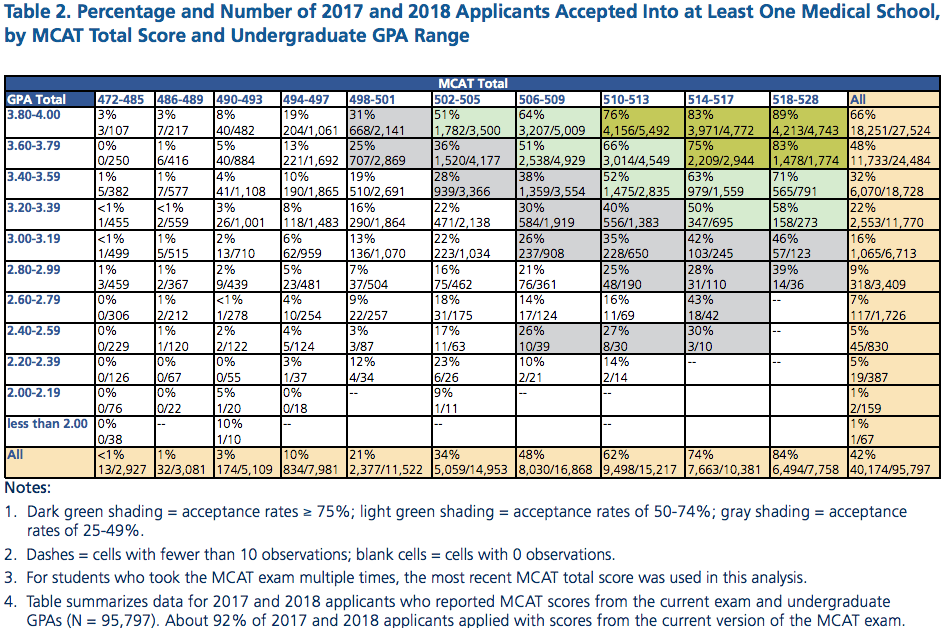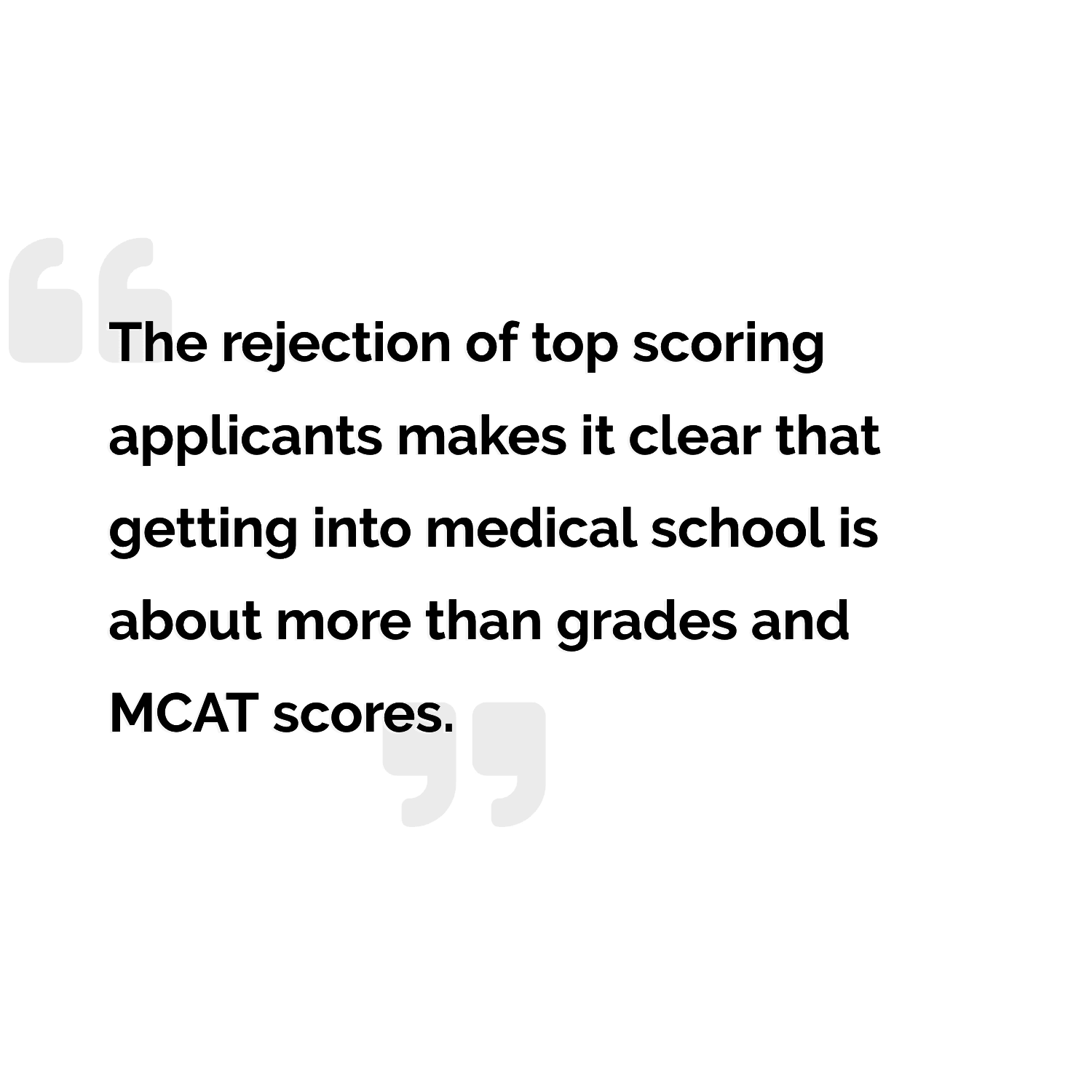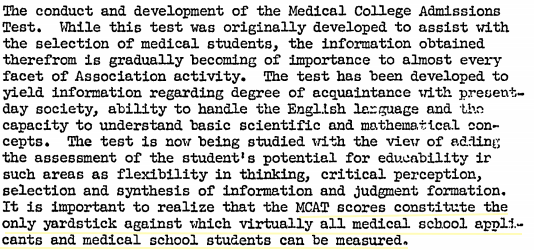This article focuses on holistic review, a framework that guides how medical schools decide which applicants to accept and which ones to reject.
By the end of this article you will be able to answer the following questions:
- What is Holistic Review?
- Why do we use holistic review in medical school admissions?
- How does Holistic Review impact your application?
- What can you do to increase your competitiveness when it comes time for medical schools to holistically review your application?
If you don’t know the answer to some of these questions, then stick around. I wrote answers to all of these questions and more.
As always with the articles/posts here at Apply with Success, I add my own perspective as someone who has reviewed and evaluated many thousands of medical school applications.
What is Holistic Review?
The AAMC describes holistic review as a “flexible, individualized way of assessing an applicant’s capabilities by which balanced consideration is given to experiences, attributes, and academic metrics.”
I describe holistic review as a philosophy, or set of guiding principles, to encourage medical schools to evaluate applicants within the unique circumstances of their lives.
Rather than decide who gets into medical school strictly by numbers (the higher the MCAT score, and GPA the more desirable the applicant), holistic review encourages consideration of other factors – an applicant’s unique characteristics, circumstances, any challenges that may have limited opportunities for growth and preparation.
The Role of The MCAT in Applicant Selection
Did you know that each year, many medical school applicants with the highest MCAT scores and GPAs are rejected everywhere they apply? Keep in mind that medical school applicants apply to an average of 17 medical schools. It is hard to imagine that top scorers on the MCAT who also have the highest possible GPAs would be rejected not just one time, but to an average of 17 medical schools.
Unfortunately, it is true.
Let’s take a look at some data.

This chart can be found in “Using MCAT Data For Medical Student Selection,” a guide published for medical school admissions officers. If you are interested in reading this guide, you can find a copy here.
In the above chart, we can see medical school applicant data for the 2017 and 2018 admissions cycles.
Take a look at the first cell underneath the MCAT range 518-528. You can see that 11% of applicants with the highest combined MCATs and GPAs were rejected from every medical school to which they applied. We are talking about applicants who had MCAT scores higher than 517, and GPAs of 3.8 and above.
Now consider that applicants apply to an average of 17 medical schools each year.
We are not talking about a fluke or an anomaly. An average of 17 medical schools all, independently of one another, decided to reject many of the applicants with the highest MCAT scores and GPAs.
The History of the MCAT
The rejection of top scoring applicants makes it clear that getting into medical school is about more than good grades and a high MCAT score, but this wasn’t always the case.

The MCAT used to be the top instrument for selecting medical students.
In a historic document of the AAMC from 1959, the AAMC described the MCAT as ”the only yardstick against which virtually all medical school applicants and medical students can be measured.”


The MCAT was, for many years, the top metric for medical school applicant selection. Every other aspect of the AMCAS primary application may have been interesting, even helpful, but the MCAT was the most trusted data point in deciding which applicants to accept into medical school. Even in 2021, the MCAT continues to be relied on heavily.
So why do medical schools continue to care so much about the MCAT?
The MCAT is seen as a standardized method of comparing medical school applicants. This is why medical school leaders described the MCAT as “the only yardstick” by which applicants can be judged.
Being able to make decisions between thousands of applicants is, understandably, important.
Medical schools are always under pressure to make applicant selection decisions quickly and with good results.
But how does the MCAT fit into applicant selection?
We can see what people in the 1950s thought about the test. The MCAT was supposed to gauge an applicant’s ability to think critically, understand the English language, and harness mathematical and scientific concepts.
We have had many years of changes to the MCAT, both in terms of the questions asked, and even the scoring scale. So what do we know about the MCAT today?
The Role of the MCAT Today
We know that MCAT scores are predictive of future grades and test performance.
For medical schools, prediction of academic performance is important. Medical schools want to make sure that their students will do well in classes, and go on to do well on their board exams. Along with GPA, MCAT performance helps medical schools understand which applicants are likely to be successful in the classroom.
Here are two more reasons that GPA and MCAT have historically been heavily relied upon in applicant selection:
- Ease of judging applicants
- It is easy to rank thousands of applicants to a medical school using GPA and MCAT. This can be accomplished with a little bit of time and basic spreadsheet skills. We can sort by MCAT and GPA score. Applicants below a particular number can be rejected. Scoring applicants based on GPA and MCAT allows for decisions on thousands of applicants at the click of a button.
- Objectivity of data
- There is a perception that quantitative data is trustworthy, especially non-self-reported data (GPA & MCAT). Qualitative and open-ended information provided by applicants (like essays) is harder to judge and considered less trustworthy.
At the start of this article, we learned that many applicants with the highest MCAT scores and GPAs are rejected from all of their medical schools. So getting into medical school is no longer about grades or test scores alone.
What has changed?
The answer: Holistic Review.
A holistic approach to medical school application review recognizes two important truths:
- Becoming a good medical doctor is about much more than test scores and grades.
- Not everyone has the same advantages and opportunities in life.
The first truth, that being a good physician is about much more than a test score or GPA, is self-evident. While we certainly want our physicians to be intelligent, inquisitive, and critical thinkers, we recognize there are other important attributes.
We also value physicians for their compassion, their desire to help us as patients, and their skills within their medical specialties.
Predicting such qualities goes beyond test scores and grades. This is why medical schools look for medically-related experience, volunteerism, leadership, etc.
Onto the second truth: we do not all have the same opportunities in life. Here is an anecdote, or way of thinking about this admissions concept. I came up with this analogy years ago, but I think it still serves its purpose. Think about a long-distance race with thousands of runners, like a marathon. Everyone is lined up at the starting line, but the road is only so wide, so very few runners will cross the starting line the moment the race begins.
If every runner’s time begins at the same moment, those runners closest to the starting line will have an advantage over everyone behind them. Think about the people at the very back of the line at the beginning of a race; they might be minutes behind just because of their starting place. The runners at the back of the pack may never be able to catch up.
Instead of shrugging our shoulders and saying, “oh well,” it is what it is, life isn’t fair, we use a device to level the playing field. Runners in competitive races are equipped with tiny sensors (often attached to their racing bib) that track the moment they cross both the starting and finishing lines.
I think of holistic review as that chip that runners wear so that they are not unfairly penalized for where they start the race.
Every applicant has different circumstances growing up. Some applicants come from well-off and/or well-connected families and have more opportunities to engage in interesting experiences, research, or volunteer instead of working paying job to afford rent and groceries.
Similarly, MCAT preparation has been tied to socioeconomic background. It should come as no surprise that the more an applicant prepares for the MCAT, the higher the likelihood of achieving a good score. Work, family responsibilities, financial barriers all take time and focus away from preparing for medical school. Applicants who carry a great many responsibilities have less time available to focus on MCAT preparation. Applicants from families that can help insulate from distractions and weighty responsibilities have more opportunities to prepare for medical school. It should come as no surprise then that, historically, metric-heavy admissions processes have resulted in the underrepresentation of many groups in medicine.
Addressing the Limitations of the MCAT
Remember earlier in this article, I mentioned that both the GPA and MCAT are predictive of medical school academic performance and board scores (at least the first board examination). However, grades and MCAT scores are not good predictors of other elements medical schools look for in future physicians.
We all either have been or will likely be a patient someday. What do we look for in a physician? Do we look for the physician with the highest GPA or MCAT? That would be a rather strange telephone call for the person at the front desk of a clinic: “Hello, I am calling to make an appointment, but before I decide if this is the right place for me, I need to know how high Dr. X scored on the MCAT.” I would like to think that has never happened, but we do live in an interesting world…
So what do we look for in a physician? Let’s make a brief list:
- Compassion
- Good active listening skills
- Empathy
- Competency
This short list might just encompass what many of us look for in a physician. Let’s go through each item.
Compassion is recognizing when others are in distress and having the desire to help.
Good active listening skills means being in the moment focused on someone else rather than ourselves. It is also about suppressing the urge to begin thinking of solutions before the speaker has finished sharing the details.
I will add that many researchers have found a positive relationship between physicians’ level of listening and patient outcomes. Physicians who are poor listeners are more likely to miss out on key details that could impact treatment plans and ultimately the health of the patient.
Empathy is the ability to relate to others, to put yourself in the shoes of others and understand what life is like from their perspectives. Like listening, empathy impacts patient outcomes. When we combine, compassion, listening, and empathy, we end up with what is known as doctor-patient concordance, or the ease of interaction between the two people. Just as with the studies on the impact of good listening, researchers have found health outcomes to correlate with doctor-patient concordance (how well the doctor and patient relate to each other).
Patients who feel at ease with their physicians, are more likely to share sensitive information. Consider what happens if a patient fails to disclose critical information because of a lack of comfort with the physician. Similarly, what happens if a physician doesn’t take the time to get to know a patient well enough to learn of other conditions, behaviors, or circumstances that could impact the diagnosis and subsequent treatment plan?
If you are interested in the topic of physician-patient concordance and health outcomes, here are a few peer-reviewed articles I recommend.
Race, Gender, and Partnership in the Patient-Physician Relationship get the article here.
Patient and Visit Characteristics Related to Physicians’ Participatory Decision-Making Style: Results from the Medical Outcomes Study get the article here.
The Communication of Medical Information in General Practice Consultations as a Function of Patients’ Social Class get the article here.
Finally, we come to competency. All of the aforementioned qualities are important, but they are limited in effectiveness if physicians lack the ability to reliably perform skills and tasks associated with their specialties.
Notice, none of these physician qualities are associated with MCAT performance. The MCAT was never designed to predict whether a physician would have strong clinical skills, be a good listener, or exercise compassion or empathy with a patient.
Why Holistic Review is Important
We know that metrics like MCAT and GPA are not designed to be predictive of all the qualities associated with being a good physician. And, we talked about how holistic review can be an equalizer, the tracking device in a long-distance race to ensure that runners are not penalized regardless of how far back they are from the starting line. Now, we will examine how holistic review helps ensure that applicants to medical school are judged on more than just MCAT and GPA.
Note: I am not saying that you should ease off your preparation or that MCAT scores and GPAs no longer matter. Grades and MCAT scores still matter. However, so too does an applicant’s background, experiences, challenges they have faced, and perhaps most importantly, the ability to articulate these factors in the application (essays and experience descriptions).
This next part might frustrate you, but like so many aspects of the medical school admissions process, each school is free to decide how to implement holistic review. In other words, there is no rubric I can provide that says, ‘MCAT is worth a maximum of 10 points, medical experiences are worth as much as 15 points, community service…’ Unfortunately for applicants, neither holistic review nor the broader application process is cut and dry.
So what is the point of discussing holistic review if there is no rubric for applicants to follow?
It’s all about how you prepare.

How Holistic Review Impacts Your Application
Instead of spending all your time on grades and MCAT prep, it is important to be balanced. Be mindful of the many dimensions of preparation. Remember the importance of experiences. Rich experience not only helps your Work/Activities section of the AMCAS application, it also provides a mature perspective to bring to the personal comments essay and the interviews, which I am sure you will receive!
It’s a balancing act.
Remember at the start of this article, I shared that 11% of applicants with the highest MCAT scores and undergraduate GPAs are rejected from every medical school to which they apply? I didn’t mention why those top scoring medical school applicants get rejected.
Can you guess why an applicant with top scores would be rejected?
Most applicants with top scores who are rejected from all of their medical schools are lacking in other key areas of the AMCAS application. This is why it is important to balance your preparation for medical school. It is not enough to just have a high MCAT and undergraduate GPA.
You cannot focus so much on acing the MCAT that you fail to leave time for participating in meaningful activities.
A competitive application consists not only of strong grades and MCAT scores, but also medically-related experiences, service to the community, examples of teamwork, leadership, and basic research skills.
A Competitive Holistic Review
We know that holistic review has contributed to the rejection of many academically inclined medical school applicants.
With so many more applicants than first-year seats, medical schools have to be picky about who they accept.
Actually, it isn’t so much about affording to be picky as it is having the burden of being picky. … But what are they looking for and what can you do?
Medical school applicants need to be well-rounded. Applicants cannot afford to spend all of their time on MCAT prep and academics.
I have personally denied many applicants who had near perfect MCATs and grades (actually some were perfect), but barely any experiences.
You cannot expect to get into medical school if you lack quality experiences in categories like medical/clinical, leadership, service, etc.
We know for certain that you cannot rely on a high GPA or MCAT score; the chart at the beginning of this article shows us that. On the other hand, you cannot rely on a surplus of medical experience to offset a really low MCAT score. The application is a package deal; everything matters. There is some give and take, like a higher MCAT and GPA can offset fewer experiences or less time in those activities. Similarly, more experiences and more hours in those quality activities can balance out a less than ideal MCAT or GPA, but only within reason.
What is reasonable?
Reasonable here means considering the MCAT range at a particular medical school and understanding if you are significantly below the bottom of that range, it is likely that no amount of experience will make up the difference.
But, and this is a big but… context matters.
Think back to the marathon race. Holistic review isn’t just about reducing the weight of grades and MCAT scores. Similarly, holistic review isn’t just about increasing the value of extracurriculars. Holistic review is about recognizing what applicants do with the cards they are dealt.

What did you accomplish with the opportunities you were afforded?
What did you achieve despite barriers and hardships?
When I review a medical school application, I take into consideration the starting place in the race of life. If an applicant comes from a low-income family and has had to work multiple jobs to afford food, clothing, and other essentials, I consider that when I look at the kind of experiences reported in the Work/Activities section of the AMCAS application.
On the other hand, when an applicant is from a socioeconomically advantaged family, but has not taken the opportunity to get involved in strong relevant activities, that could have a negative impact on my review.
To be clear, all applicants, regardless of dis/advantages, still expected to demonstrate experience in key categories.
What Holistic Review Means for You
For applicants who have been afforded more advantages in life (relative to the average person; think beyond the people you know since they might not be representative of the average person your age), make sure you are gaining exposure to and contributing as much as possible to the well-being of others from different backgrounds. Volunteer, expose yourself to the kind of experiences many patients face as a part of daily life.
For applicants who have not had a lot of opportunities (again think relative to the average person, not necessarily relative to an immediate peer group), if you have had to work, acknowledge that experience. Work experience can be a huge boon to your application. Paid work shows responsibility, cooperation, perhaps leadership as well. Strive to divide paid experiences among medical and non-medical categories. If paid work is all non-medical/clinical, use what little free time you have to volunteer in medical/clinical settings.
Holistic review may seem like a wonderful approach to applicant selection, and in many ways it is. But don’t fool yourself into thinking it makes your life easier because it takes pressure off of your academics or MCAT preparation.
Holistic review means that no single category of the application is the end-all-be-all. Strive to do well in as many areas as possible (grades, MCAT, and breadth of meaningful experiences in as many categories as possible in the AMCAS Work/Activities section).
Conclusion
So here we are at the end of the article. What have we learned? Let’s see if we can answer those questions I mentioned at the beginning.
- What is Holistic Review?
- Why do we use holistic review in medical school admissions?
- How does Holistic Review impact your application?
- What can you do to increase your competitiveness when it comes time for medical schools to holistically review your application?
What is Holistic Review?
Holistic review is an approach to evaluating medical school applications that focuses on context. What has an applicant done with the opportunities they have been presented in life? What has an applicant done despite any disadvantages? Rather than taking an objective approach, holistic review puts each individual applicant front and center and says, “These were the cards that were dealt. Here is what has been going on. This is what was accomplished.”
Why Do We Use Holistic Review in Medical School Admissions?
Holistic review has been a push to consider that medical school applicants are as diverse as the patients they may one day serve. Holistic review creates the flexibility to consider many factors that contribute to becoming a good physician and not placing all of the weight on GPA and MCAT.
How Does Holistic Review Impact Your Application?
Holistic review does not make applicants’ lives easier. It is true that holistic review is partly responsible for the reduction in value of grades and MCAT scores in the admissions process. However, this just means that other aspects of the application have increased in value. Strong medical school applicants have more experiences (and more hours in those experiences) than ever before. It is increasingly important to demonstrate a breadth of medical experiences, service, leadership, a basic understanding of research, etc.
What Can You Do to Increase Your Competitiveness?
Competitive medical school applicants are consistently productive. If you think of a traditional path to medicine, you are looking at applying to medical school around your third year of college. That gives you, at most, three years to do well academically, prepare for and take the MCAT, and gain experience in the various categories found in the Work/Activities section of the AMCAS application. To be as competitive as possible, you need to gain multiple experiences in core categories (humanitarianism/service, medical/clinical, research, leadership).
How much experience is enough? In key areas like medical and service, you can never have too much. In terms of experience, here is one of the best ways you can measure your preparation.
Number a piece of paper from 1 to 15. See how many meaningful experiences you can list. If you find you are unable to get to 15, you may want to consider which categories you are lacking and seek out additional experiences.
If you are listing each shadowing experience separately, you may want to seek out additional experiences. Just like increasing the font of your report paper, you are not fooling your application readers by listing shadowing experiences separately, especially if those experiences are single day observations (as opposed to spending weeks observing one or more providers).
Try to have so many experiences that only one of your 15 total will be shadowing/observation. You can list multiple shadowing experiences in a single experience slot on your AMCAS application. In the descriptions section of your shadowing experience you can list out your many different observation experiences.
There is a lot I can say about gaining experience and even more about how to report experiences in the AMCAS application. I will write an article just on experiences in the future. In the meantime, be sure to check out my other articles on the medical school application process.
For now, I hope this article has been helpful.
If you want more information on holistic review, or any other topic for that matter, let me know.
I wish you the best.
Sincerely,
Adam Lowrance, PhD
Let me know in the comment section if you found this article helpful. Where are you in the process? Are you applying to medical schools this cycle, or thinking about doing so in the future?

